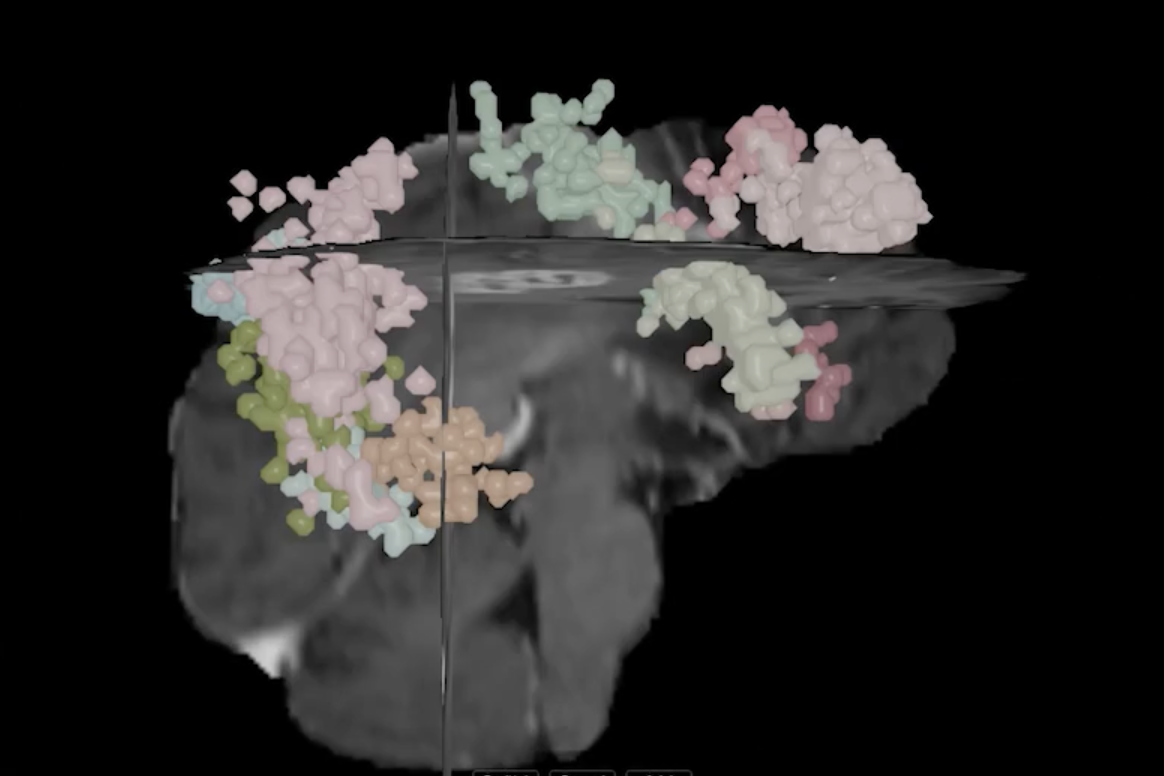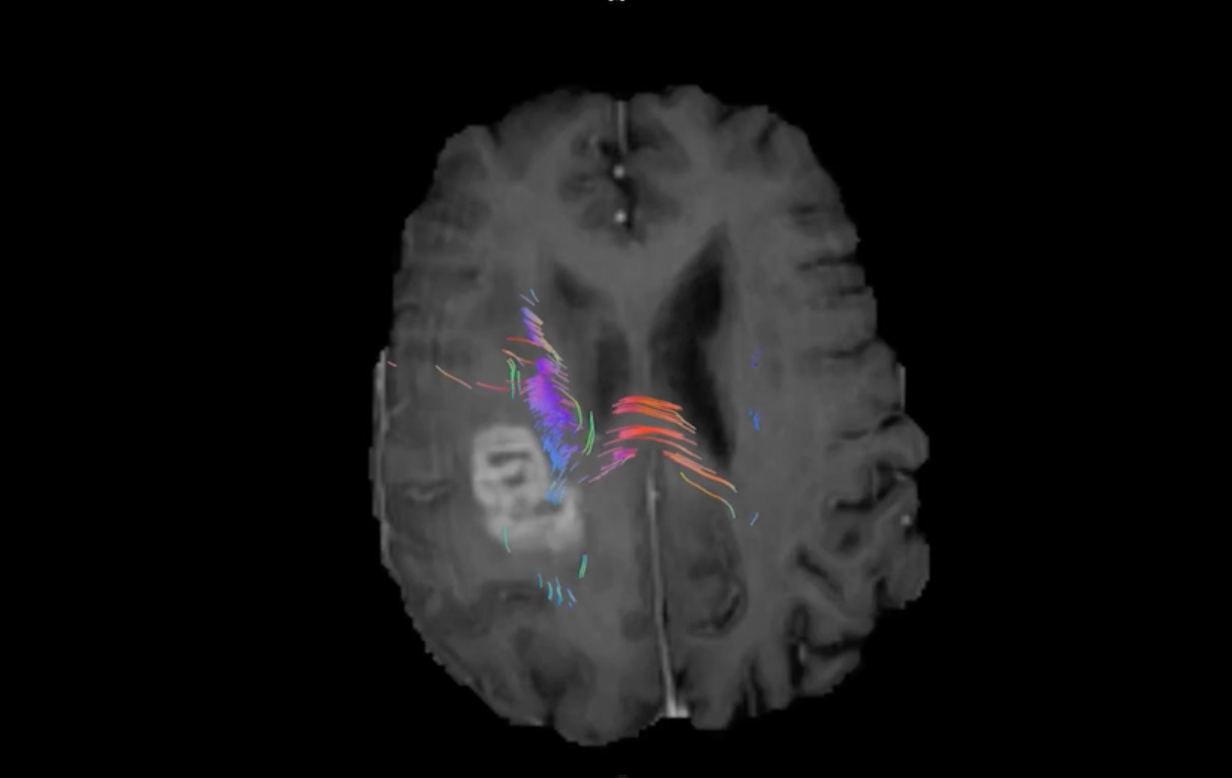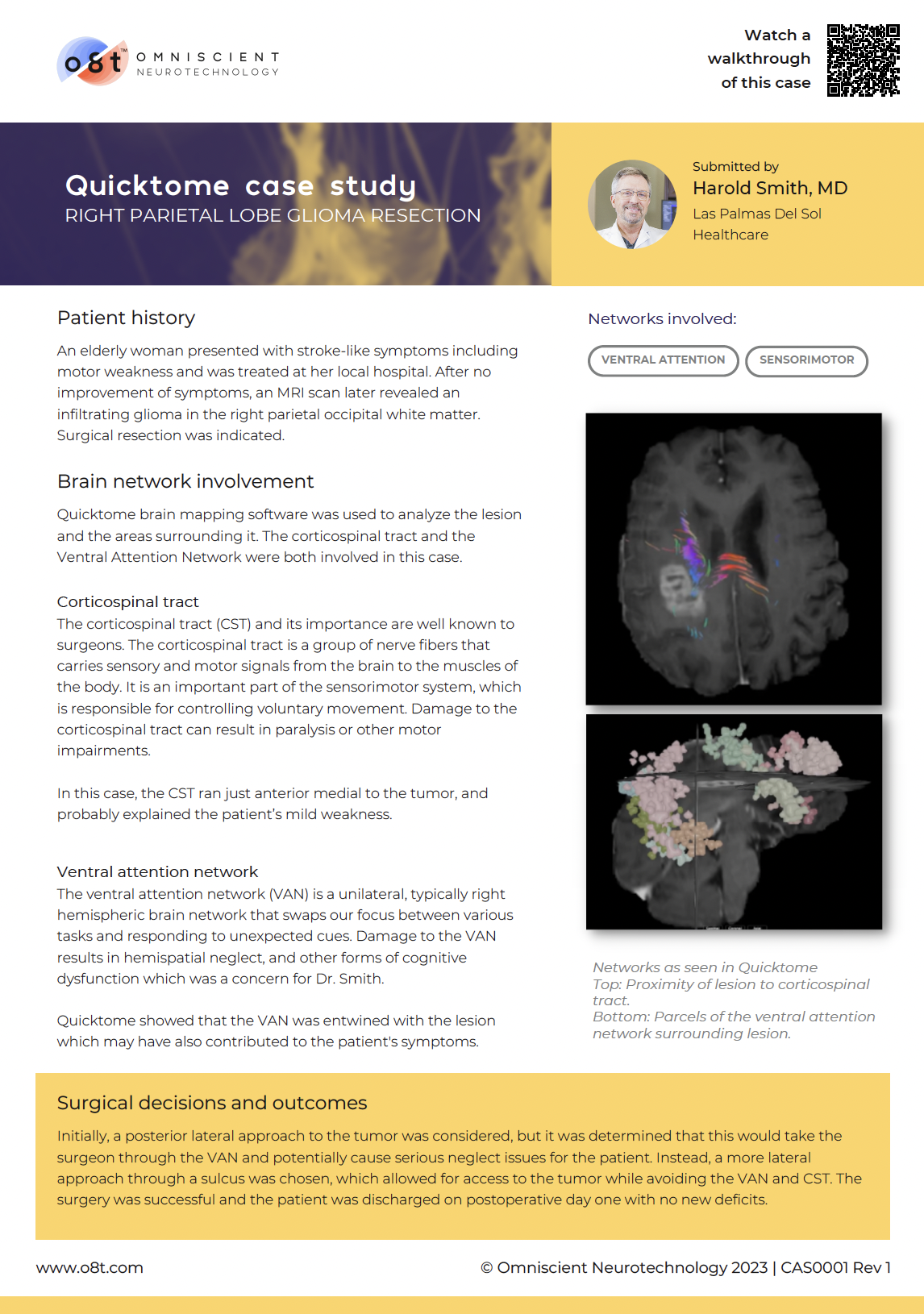Quicktome brain mapping software was used to analyze the lesion and the areas surrounding it. The corticospinal tract and the ventral attention network were both involved in this case.
Corticospinal tract
The corticospinal tract (CST) and its importance are well known to surgeons. The corticospinal tract is a group of nerve fibers that carries sensory and motor signals from the brain to the muscles of the body. It is an important part of the sensorimotor system, which is responsible for controlling voluntary movement. Damage to the corticospinal tract can result in paralysis or other motor impairments.
In this case, the CST ran just anterior medial to the tumor, and probably explained the patient’s mild weakness.
Ventral attention network
The ventral attention network (VAN) is a unilateral, typically right hemispheric brain network that swaps our focus between various tasks and responding to unexpected cues. Damage to the VAN results in hemispatial neglect, and other forms of cognitive dysfunction which was a concern for Dr. Smith.
Quicktome showed that the VAN was entwined with the lesion which may have also contributed to the patient's symptoms.






